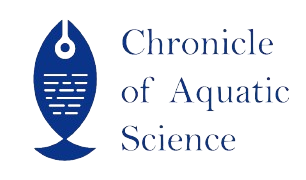| File | Action |
|---|---|
| CoAS_V3IS1_1 | Download |
- 919088951040 call us
- chronicleofaquaticscience@gmail.com Mail us
CoASV3IS101
Global Eutrophication Spreads, Causes, Consequences and Control
K. G. Pithiya, U. D. Vyas, S. R. Lende, V. S. Kshatriya, S. V. Kharadi*, V. R. Tandel and H. B. Solanki
Abstract
Eutrophication, the excessive nutrient enrichment of aquatic ecosystems, has become one of the most critical environmental challenges in modern times, affecting both
freshwater and marine systems globally. This process, driven by elevated concentrations of nutrients such as nitrogen and phosphorus, leads to detrimental outcomes like algal blooms, oxygen depletion, and the creation of hypoxic "dead zones." Eutrophication is caused by both natural and anthropogenic factors, with human activities like agricultural runoff, urbanization, wastewater discharge, and deforestation playing major roles. These nutrient overloads trigger significant ecological disruptions, including the loss of biodiversity, oxygen depletion, and the proliferation of harmful algal species that pose risks to aquatic life and human health. In addition, cyanobacterial blooms have become a major concern due to their toxicity, which can lead to the death of aquatic organisms, contamination of drinking water, and health hazards to humans and animals. Globally, the prevalence of eutrophic water bodies has significantly increased, with the number of affected systems continuing to rise due to factors like urbanization, agricultural intensification, and climate change. This review explores the causes, consequences, and geographical spread of eutrophication, highlighting the urgent need for effective management and mitigation strategies to protect aquatic ecosystems and the services they provide.
freshwater and marine systems globally. This process, driven by elevated concentrations of nutrients such as nitrogen and phosphorus, leads to detrimental outcomes like algal blooms, oxygen depletion, and the creation of hypoxic "dead zones." Eutrophication is caused by both natural and anthropogenic factors, with human activities like agricultural runoff, urbanization, wastewater discharge, and deforestation playing major roles. These nutrient overloads trigger significant ecological disruptions, including the loss of biodiversity, oxygen depletion, and the proliferation of harmful algal species that pose risks to aquatic life and human health. In addition, cyanobacterial blooms have become a major concern due to their toxicity, which can lead to the death of aquatic organisms, contamination of drinking water, and health hazards to humans and animals. Globally, the prevalence of eutrophic water bodies has significantly increased, with the number of affected systems continuing to rise due to factors like urbanization, agricultural intensification, and climate change. This review explores the causes, consequences, and geographical spread of eutrophication, highlighting the urgent need for effective management and mitigation strategies to protect aquatic ecosystems and the services they provide.
Keywords
Eutrophication, Ecosystem, Water quality, Hypoxia, Coastal zones
References
Akpor, O. B., & Muchie, B. (2011). Environmental and public health implications of wastewater quality. African Journal of Biotechnology, 10(13), 2379-2387.
Almanassra, I. W., Mckay, G., Kochkodan, V., Atieh, M. A., & AlAnsari, T. (2021). A state of the art review on phosphate removal from water by biochars. Chemical Engineering Journal, 409, 128211.
Bali, M., & Gueddari, M. (2019). Removal of phosphorus from secondary effluents using infiltration–percolation process. Applied Water Science, 9, 1-8.
Carpenter, S. R., Caraco, N. F., Correll, D. L., Howarth, R. W., Sharpley, A. N., & Smith, V. H. (1998). Nonpoint pollution of surface waters with phosphorus and nitrogen.
Ecological Applications, 8(3), 559-568.
Chorus, I., & Bartram, J. (1999). Toxic Cyanobacteria in Water: A Guide to Public Health Significance, Monitoring and Management. Published on behalf of WHO by E & FN Spon/Chapman & Hall, London, 416 pp.
Costa, J. A. D., Souza, J. P. D., Teixeira, A. P., Nabout, J. C., & Carneiro, F. M. (2018). Eutrophication in aquatic ecosystems: A scientometric study. Acta Limnologica
Brasiliensia, 30, e2.
Datta, S. (2012). Management of water quality in intensive aquaculture. Respiration, 6(602), 1-18.
Diaz, R. J., & Rosenberg, R. (2008). Spreading dead zones and consequences for marine ecosystems. Science, 321(5891), 926-929.
Galloway, J. N., Cowling, E. B., & Seitzinger, S. P. (2004). Nitrogen deposition: Sources, effects, and controls. Environmental Science & Technology, 38(24), 1-12.
Gibson, G., Carlson, R., Simpson, J., Smeltzer, E., Gerritson, J., Chapra, S., & Kennedy, R. (2000). Nutrient criteria technical guidance manual lake and reservoirs.
Greenhalgh, S., & Selman, M. (2012). Comparing water quality trading programs: What lessons are there to learn? Journal of Regional Analysis & Policy, 42(2), 104-125.
Huang, X., Guida, S., Jefferson, B., & Soares, A. (2020). Economic evaluation of ion-exchange processes for nutrient removal and recovery from municipal wastewater. NPJ Clean Water, 3(1), 1-10.
Huisman, J., Codd, G. A., Paerl, H. W., Ibelings, B. W., Verspagen, J. M., & Visser, P. M. (2018). Cyanobacterial blooms. Nature Reviews Microbiology, 16(8), 471-483.
Almanassra, I. W., Mckay, G., Kochkodan, V., Atieh, M. A., & AlAnsari, T. (2021). A state of the art review on phosphate removal from water by biochars. Chemical Engineering Journal, 409, 128211.
Bali, M., & Gueddari, M. (2019). Removal of phosphorus from secondary effluents using infiltration–percolation process. Applied Water Science, 9, 1-8.
Carpenter, S. R., Caraco, N. F., Correll, D. L., Howarth, R. W., Sharpley, A. N., & Smith, V. H. (1998). Nonpoint pollution of surface waters with phosphorus and nitrogen.
Ecological Applications, 8(3), 559-568.
Chorus, I., & Bartram, J. (1999). Toxic Cyanobacteria in Water: A Guide to Public Health Significance, Monitoring and Management. Published on behalf of WHO by E & FN Spon/Chapman & Hall, London, 416 pp.
Costa, J. A. D., Souza, J. P. D., Teixeira, A. P., Nabout, J. C., & Carneiro, F. M. (2018). Eutrophication in aquatic ecosystems: A scientometric study. Acta Limnologica
Brasiliensia, 30, e2.
Datta, S. (2012). Management of water quality in intensive aquaculture. Respiration, 6(602), 1-18.
Diaz, R. J., & Rosenberg, R. (2008). Spreading dead zones and consequences for marine ecosystems. Science, 321(5891), 926-929.
Galloway, J. N., Cowling, E. B., & Seitzinger, S. P. (2004). Nitrogen deposition: Sources, effects, and controls. Environmental Science & Technology, 38(24), 1-12.
Gibson, G., Carlson, R., Simpson, J., Smeltzer, E., Gerritson, J., Chapra, S., & Kennedy, R. (2000). Nutrient criteria technical guidance manual lake and reservoirs.
Greenhalgh, S., & Selman, M. (2012). Comparing water quality trading programs: What lessons are there to learn? Journal of Regional Analysis & Policy, 42(2), 104-125.
Huang, X., Guida, S., Jefferson, B., & Soares, A. (2020). Economic evaluation of ion-exchange processes for nutrient removal and recovery from municipal wastewater. NPJ Clean Water, 3(1), 1-10.
Huisman, J., Codd, G. A., Paerl, H. W., Ibelings, B. W., Verspagen, J. M., & Visser, P. M. (2018). Cyanobacterial blooms. Nature Reviews Microbiology, 16(8), 471-483.
- Published online
- 15th March, 2025
How to Cite the Article
Pithiya KG, Vyas UD, Lende SR, Kshatriya VS, Kharadi SV, Tandel VR and Solanki HB. Global Eutrophication Spreads, Causes, Consequences and Control. Chron Aquat Sci. 2025; 3(1):1-5
Copyright
This is an open-access article distributed under the terms of the Creative Commons Attribution License (CC BY). The use, distribution or reproduction in other forums is permitted, provided the original author(s) and the copyright owner(s) are credited and that the original publication in this journal is cited, in accordance with accepted academic practice. No use, distribution or reproduction is permitted which does not comply with these terms.

CoAS_V3IS1_1


